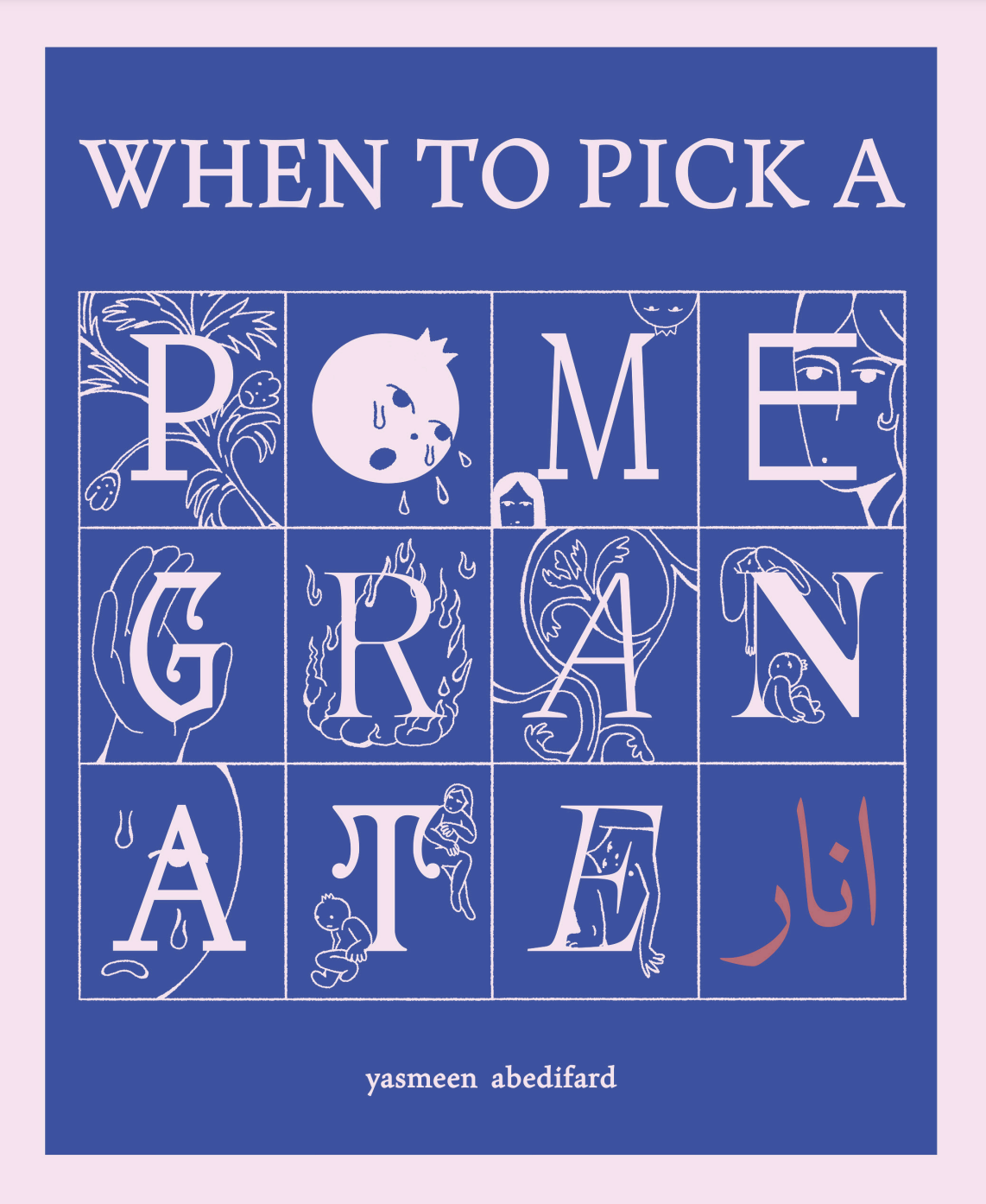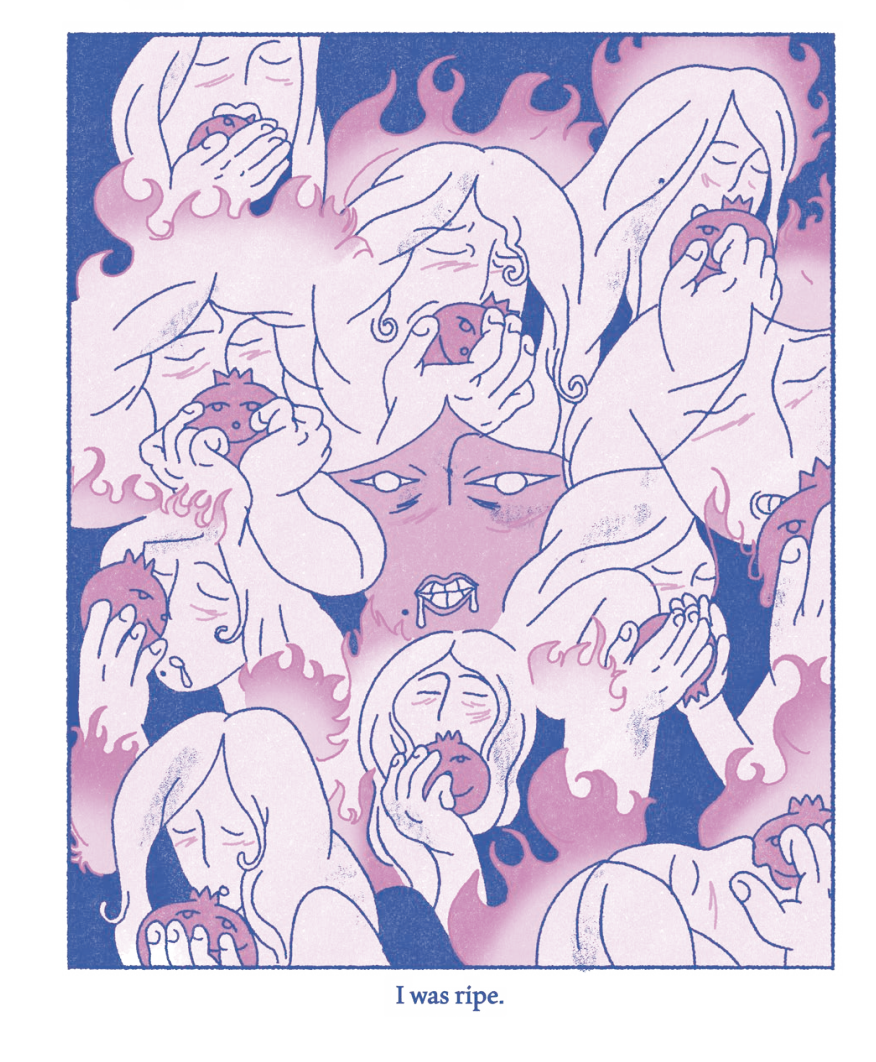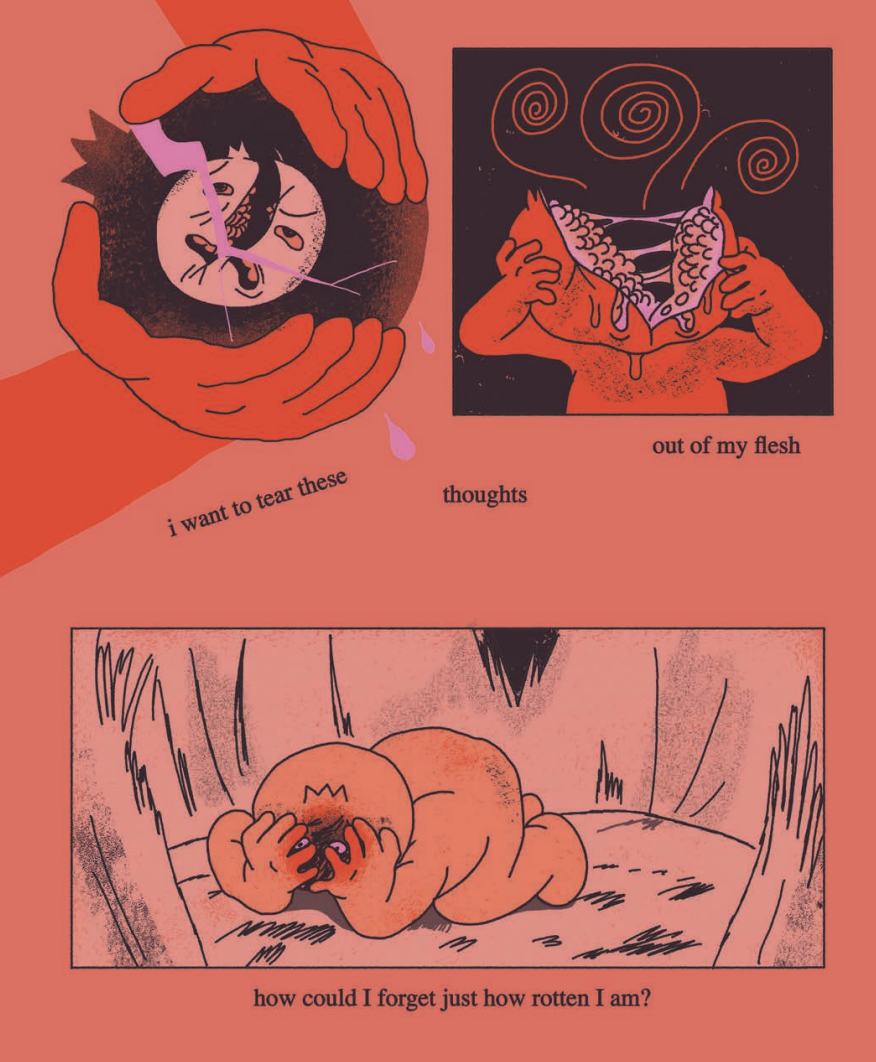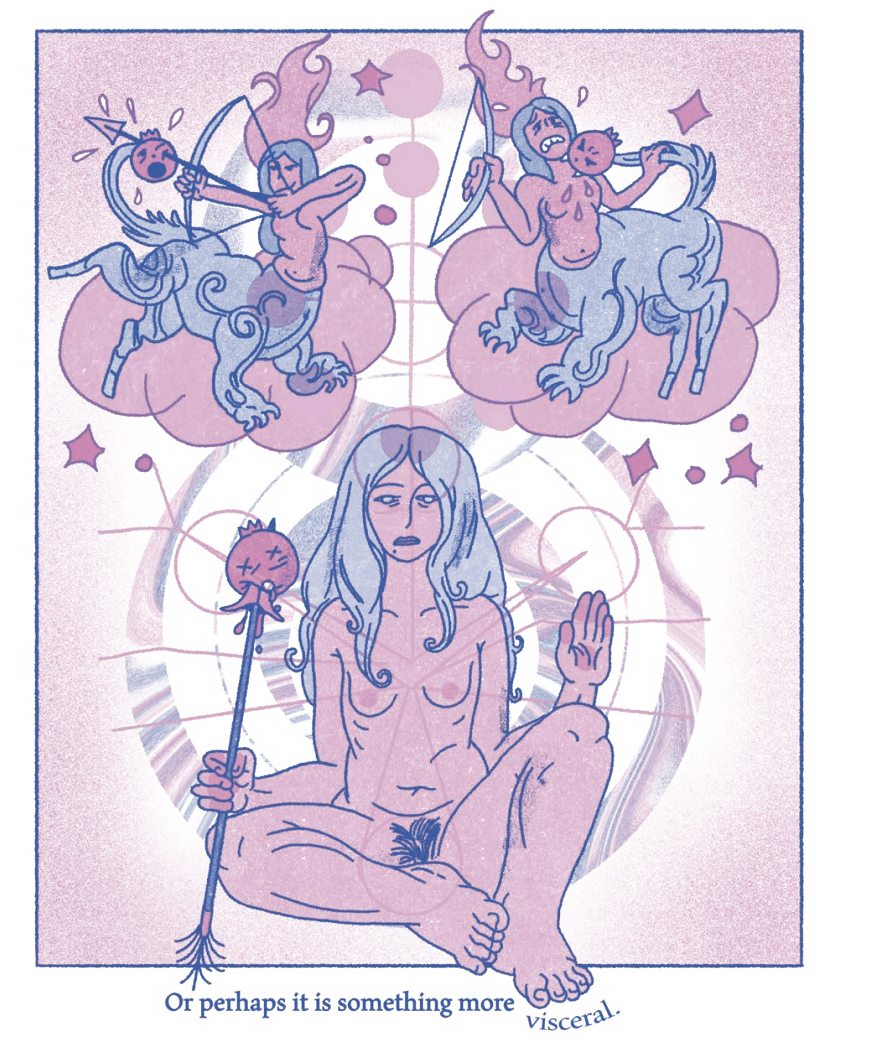Upon waking in a garden-like void, a disoriented pomegranate named Anar and a woman named Guli question their existence: Who are they? What is their purpose? Suddenly, a pair of divine hands plucks them from their quiet panic and launches them through a journey — one in which they are born and reborn, their souls interlinked but their relationship ever-changing. From cycle to cycle, Anar and Guli shape-shift, taking on different physical forms as they amalgamate and coalesce, inflicting the sharpness of their hate, anger, desire, hunger and shame onto one another.
The two perform the ceaseless and sometimes futile yearning for transformation in Oakland-based artist Yasmeen Abedifard’s new comic collection, When to Pick a Pomegranate (out Sept. 25 via Silver Sprocket). In seven short comics that follow the plant life cycle, Anar and Guli’s iterations begin as a seed before evolving through propagation and bursting with ripeness until they inevitably rot. As they repeat the process over and over, they experience a Punnett square of change: endless outcomes in which their autonomy and sense of self is tested and morphed.

Like the sections of her book, Abedifard’s artistry has bloomed through various life stages. Her parents immigrated to the U.S. from Iran, and Abedifard was raised in the South Bay suburb of Sunnyvale, where she developed an affinity for drawing and cartoons. “They had a public library, and there was a manga section, and so my mom would take me and my sister,” she says during an interview in a Berkeley park. “We would plop ourselves down and I would just read a whole book.”
As a teen, Abedifard got into making digital art on a small Wacom tablet and began posting her illustrations onto the platform DeviantArt. With a penchant for drawing characters, she contemplated going to art school for college. “But I had two immigrant parents that were like — maybe try something else. And I actually have some gratitude to that,” Abedifard reflects.
She ended up studying psychology and Middle Eastern Studies at the University of San Francisco. “I got to learn a lot about Islamic and Persian history. I got to learn a lot about how the brain works and how cognitive function impacts your daily life — all of these things that became really important to me.”

Abedifard immediately entered an interdisciplinary visual arts MFA program at Cornell, where she grew increasingly lost and disillusioned with the critique she was receiving. While many of her peers were older artists who worked with abstract imagery, she was drawn to figurative work inspired by illuminated manuscripts and Islamic iconography.
“I started to become really frustrated because all that I was getting critiqued on or talked about was material, like how things are made rather than the actual image itself,” Abedifard explains. “Because I was like, I want you to see what this image is and what it makes you feel, right? I felt like I was totally an imposter, being really young and in a new space. And then I was like, ‘Why don’t I just make comics again? This is the thing I like to do.’”

Her excitement was reinvigorated. She redrew the first comic she ever made (“Rotten”), screen printed all of the pages and exhibited them at a group show at the end of her first year. In her second year, she leaned into comics making and experimented with animation and other visual mediums that allowed her to explore her interests in Persian art, poetry and storytelling.
When to Pick a Pomegranate is the culmination of the ways Abedifard’s path has diverged and reconverged in her love of cartoons, comics and her desire to connect with her heritage. There are several references to Persian art, history and language, including in the naming of the comics. “Every title, I have it in Farsi as well, because there’s a lot of meaning in the Farsi that the English doesn’t have,” says Abedifard. “For example, this word خراب (“rotten”) is like a fruit went bad, right? But also, it means something is broken or wrong.”
In When to Pick a Pomegranate, Abedifard once again redrew “Rotten,” this time with a stark, saturated color palette bathed in hellish hues of blood red and black. Lyrical prose and Abedifard’s signature style of expressive emotions amplify both humorous and emotionally anguished scenes — “Rotten” dives into an all-consuming self-loathing that rots Anar from the inside out. He dreams of tearing himself apart to be free of a shameful desire, represented through an evocative panel of body horror.

“This comic was grappling with this idea of desiring something that was not allowed, and sort of dealing with the core queer trauma of feeling disgusted with oneself [and] trying to think about ways to remove it,” says Abedifard. “I feel like this one brings up so many feelings I have around desire, eroticism, sensuality, intimacy, shame, trauma, anger … It’s my baby because it’s my first comic, [and] I just wanted to hammer it home this time.”
Beyond its focus on change and the anxieties around it, When to Pick a Pomegranate challenges readers to question: How do we heal from events that threaten to stunt us? How can we rediscover pleasure, joy and rest in ourselves and our communities? Dedicated to “saplings plucked too early,” the collection is a visually and emotionally complex venture into a contemporary kind of myth-making, one in which historical images are supplanted by daring, new roots.
‘When to Pick a Pomegranate’ will be published Sept. 25, 2024. Abedifard’s book tour kicks off with a release party at San Francisco comics shop Silver Sprocket on Sept. 21. More information about the full book tour here.